The iPhone 12 & 12 Pro Review: New Design and Diminishing Returns
by Andrei Frumusanu on November 30, 2020 8:30 AM EST- Posted in
- Mobile
- Apple
- Smartphones
- Apple A14
- iPhone 12
- iPhone 12 Pro
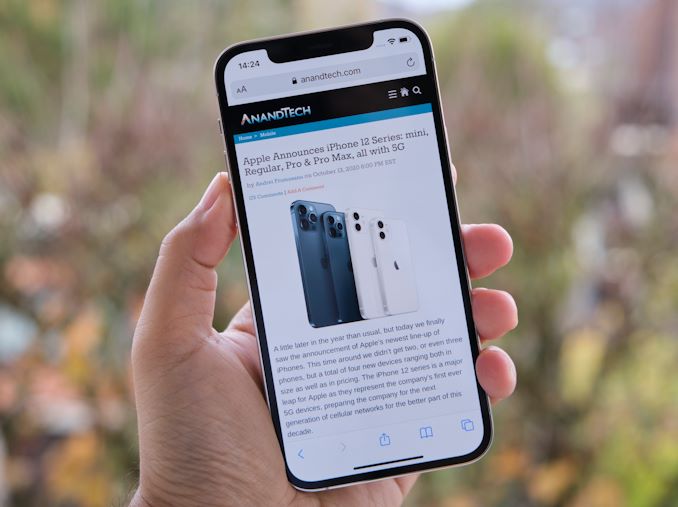
The new iPhone 12’s have been out for a while now, and while we’ve had our hands on them for a few weeks, Apple’s news bombardment of the new Apple Silicon announcement and release of new Apple M1 Mac devices has meant the iPhones have had to be put on the back burner for a little while.
Having already covered Apple’s new A14 architecture in-depth in our coverage of the M1, it’s time to fill in the missing pieces for the actual new generation of iPhones.
The new iPhone 12 generation of devices mark a new design restart for Apple, moving away from the design that had been started with the iPhone X in late 2017. Re-gaining the flat side-frame look that was originally found in past iPhone generations of the 4, 4S, 5 & 5S series, Apple is making the old new again.
The new iPhone 12 series is also Apple’s widest range release ever, with a total of four new iPhones: the iPhone 12 mini, a new compact form-factor at the lower range, the iPhone 12, the “standard” iPhone part, and continuing to offer the Pro models in the form of the iPhone 12 Pro and 12 Pro Max. We’ll be focusing on the iPhone 12 and 12 Pro for today’s review.
| Apple iPhone 12 Series Specifications | |||||
| iPhone 12 mini | iPhone 12 | iPhone 12 Pro | iPhone 12 Pro Max | ||
| SoC | Apple A14 Bionic 2 × Firestorm 4 × Icestorm |
||||
| DRAM | 4GB | 6GB | |||
| Display | 5.42" OLED 2340 x 1080 625nits peak |
6.06" OLED 2532 x 1170 625nits peak |
6.06" OLED 2532 x 1170 800nits peak |
6.68" OLED 2778 x 1284 800nits peak |
|
| Size | Height | 131.5 mm | 146.7 mm | 160.8 mm | |
| Width | 64.2 mm | 71.5 mm | 78.1 mm | ||
| Depth | 7.4 mm | 7.4 mm | 7.4 mm | ||
| Weight | 135g | 164g | 189g | 228g | |
| Battery Life | 2227 mAh -12% video vs 11 |
2815 mAh +-0% vs 11 |
2815 mAh -5.6% video vs 11 Pro |
3687 mAh +-0% vs 11 Pro Max |
|
| Wireless Charging | MagSafe Wireless Charging up to 15W Qi Compatible (7.5W) |
||||
| Rear Cameras | Main | 12MP 1.4µm 26mm eq. f/1.6 Optics OIS |
12MP 1.7µm 26mm eq. f/1.6 Sensor-shift OIS |
||
| Tele- Photo |
- | 12MP 52mm eq. f/2.0 OIS |
12MP 65mm eq. f/2.2 OIS |
||
| Ultra- Wide |
12MP 13mm eq. f/2.4 |
||||
| Front Camera | 12MP f/2.2 |
||||
| Storage | 64GB 128GB 256GB |
128GB 256GB 512GB |
|||
| I/O | Apple Lightning | ||||
| Wireless (local) | 802.11ax Wi-Fi with MIMO + Bluetooth 5.0 + NFC | ||||
| Cellular | 5G (sub‑6 GHz and mmWave**) Gigabit LTE with 4x4 MIMO and LAA **US models only |
||||
| Splash, Water, Dust Resistance | IP68 up to 6m, up to 30 minutes |
||||
| Dual-SIM | nano-SIM + eSIM | ||||
| Launch Price | 64 GB: $699 £699 €809 128 GB: $749 £749 €859 256 GB: $849 £849 €979 |
64 GB: $799 £799 €909 128 GB: $849 £849 €959 256 GB: $949 £949 €1079 |
128 GB: $999 £999 €1159 256 GB: $1099 £1099 €1279 512 GB: $1299 £1299 €1509 |
128 GB: $1099 £1099 €1259 256 GB: $1199 £1199 €1379 512 GB: $1399 £1399 €1609 |
|
Starting with the innards, the new iPhone 12 series are powered by Apple’s new A14 SoC. The new chip is powered by two high performance cores and four power efficiency cores, as well as a 4-core GPU. We’ll be going into a bit more details on the SoC in a later page, but by now based on our coverage of the Apple Silicon M1, we should also be familiar with the capabilities of the smaller A14 sibling.
In terms of DRAM, Apple fits the iPhone 12 mini and iPhone 12 with 4GB of LPDDR4X, whilst the Pro models are getting a larger 6GB pool. NAND storage this generation hasn’t changed all that much for the lower-tier models which are sticking to 64GB base, with configuration upgrades 128 or 256GB, however the Pro models do now start out with a 128GB base model, with larger configurations at 256 and 512GB.
The big new feature of this year’s new iPhones is the 5G connectivity. Thanks to the usage of a Qualcomm sourced modem, Apple is now enabling 5G connectivity across its whole new range. It’s to be noted that for users in most countries, this still only means sub-6GHz 5G NR as mmWave antennas are only deployed in the US models. What’s also interesting is that it seems that these mmWave modules are designed by Apple themselves and not sourced from Qualcomm – which makes the new iPhones the first devices on the market to have such a non-Qualcomm antenna solution.
In terms of design, the new iPhone 12 are a mix of the old and the new. What’s new on all new devices is their screens, with the “standard” sized models we’re reviewing here having 6.06” 2532 x 1170 OLED displays. What’s particularly interesting here is of course the fact that the iPhone 12 shared almost the same display specifications as the iPhone 12 Pro, something which couldn’t be said of last year’s iPhone 11 which still came with a lower resolution LCD display and a generally different form-factor as the iPhone 11 Pro.
The new iPhone 12’s only difference to the 12 Pro in terms of screen specifications is that it doesn’t get as bright as the Pro model, being listed at 625 vs 800 nits peak brightness.
On the back of the phones, although hard to notice on these white models, one thing of note besides the different camera setup is that the Pro model again comes with a frosted glass back cover whereas the regular iPhone 12 still uses a glossy glass finish.
The new design is quite a bit of departure from the past 3 years of iPhones. Apple had noted that they’ve reduced the bezel of the screen while still maintaining a symmetric look on all the sides (besides the notch of course). This gives the visual impression that the new iPhone 12/12Pro is narrower than the iPhone 11 Pro, even though that’s not actually true – though it is a few millimeters taller.
I’m still not too sure what to make of Apple’s decision to go back to a flat-edged frame as on older generation iPhones. To be honest the very first impression upon unboxing the new devices I had was that this was just a horrible design and a massive step backwards in terms of ergonomics. Although as I noted the new phone’s width isn’t wider than that of the iPhone 11 Pro, because it has right angle edges, it actually has a larger circumference compared to the rounded-off iPhones, and it translates into a larger-feeling device even though they’re the exact same form-factors.
That first bad impression isn’t quite as prevalent after a few weeks of usage as you can still somehow get used to it, but as soon as I go back to the 11 Pro or another rounded frame phone it’s immediately striking how much better it feels in the hand.
In terms of button layout, we’re seeing the same setup as previous generation iPhones, two volume buttons on the left side beneath a silent mode switch, with the power button on the right side – so nothing inherently new there. It’s interesting that even now several years after the first under-screen fingerprint sensors and quite mature and accurate implementations out be competing vendors that Apple still hasn’t attempted it on the iPhone line-up – I think many would like to see the return of TouchID in such a manner, at least as an option alongside FaceID.
The iPhone 12 Pro comes with a steel frame with a special mirror finish, while the iPhone 12 comes in a matte aluminium frame build. Apple has been using steel frames for quite some time now with the iPhone X designs, but it hasn’t been quite as striking as the design here on the new 12 Pro series. It’s a highly subjective matter and many may feel that the steel frame is more premium, but I do vastly prefer the aluminium variant due to the fact that it’s nowhere near the fingerprint magnet – just looking at the 12 Pro I have here on the desk looks quite disgusting and messy while the 12 at least appears to be clean.
Another big difference between the two phones is the fact that the steel frame (alongside the added camera) of the 12 Pro adds in another 25g to the weight of the phone to 189g vs 164g, a difference that is very much immediately noticeable.
While I prefer the matte frame of the 12, the frosted glass on the 12 Pro is just simply much better and feels much more premium to the regular glossy finish on the 12 – again, because of fingerprints and dirt.
For the new iPhone 12 mini, 12 and 12 Pro, the main camera doesn’t appear to change in terms of sensor versus the iPhone 11 series, although that’s still perfectly fine. It’s a 12MP sensor with 1.4µm pixels and full sensor dual-pixel coverage, however the new camera modules employ a larger f/1.6 aperture lens which allows for 27% more light.
For the iPhone 12 mini and iPhone 12, the second camera module is the ultra-wide, which again appears to be the same as on the 11 series, featuring a 12MP sensor with an f/2.4 aperture and a large 13mm equivalent or 120° angle FOV. The novelties for this module this year lie on the software side of things with Apple now enabling various new features such as computational night mode on this camera as well.
For the iPhone 12 Pro, the third camera module is a telephoto unit with again an apparently similar module to last year, a 12MP sensor on an 52mm equivalent (2x optical magnification) optics with f/2.0 and OIS.
The Pro models also receive what Apple calls the LIDAR module, which is essentially a ToF sensor coupled with a structured IR light emitter, allowing for 3D depth sensing.
The iPhone 12 Pro Max has a more interesting camera setup, however we’ll be reviewing this at a later date.
In general, my impression and design of the iPhone 12 and 12 Pro are two-fold, depending on the model.
Starting off with the 12 Pro, I generally don’t like the new design as the right-angle frame edges and mirror finish are both not very ergonomic and also quite messy. It’s a highly subjective opinion but it just doesn’t do it for me at all, and I vastly prefer the 11 Pro over this, even with the larger screen bezels.
Whilst I still don’t like the edges on the iPhone 12, because it’s a lighter phone and the general better feel of the matte aluminium, it’s actually the phone I prefer this generation. I would have liked the matte frosted glass on the back as well, but I guess you can’t have everything. What’s important for the iPhone 12 is that this year it’s major upgrade in terms of display compared to the iPhone 11, sporting a much higher resolution and also switching over from an LCD to an OLED. This was a major gripe of mine with the 11 and now the 12 essentially almost matches the display quality of the 11 Pro and 12 Pro devices, which is something that can’t be understated.



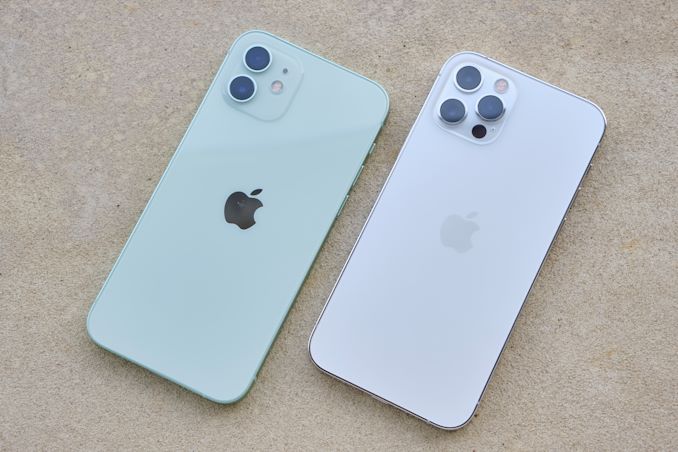
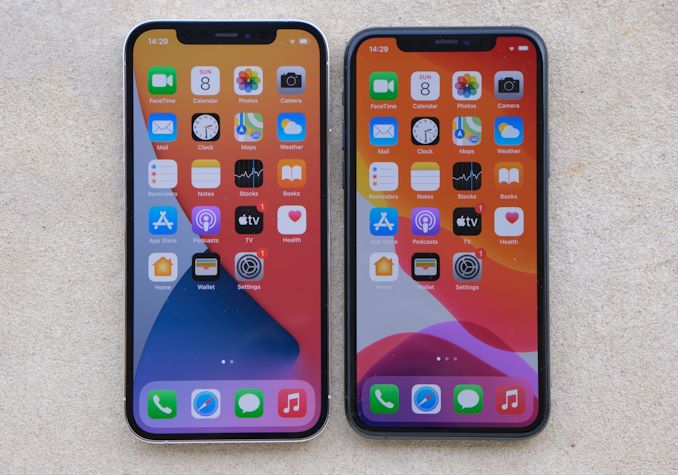
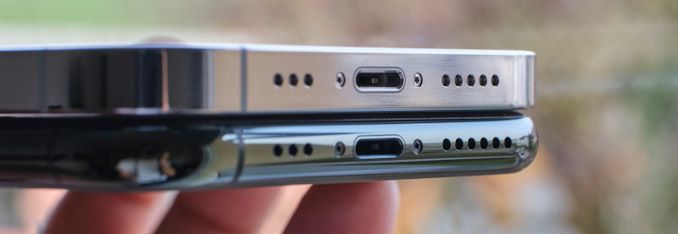

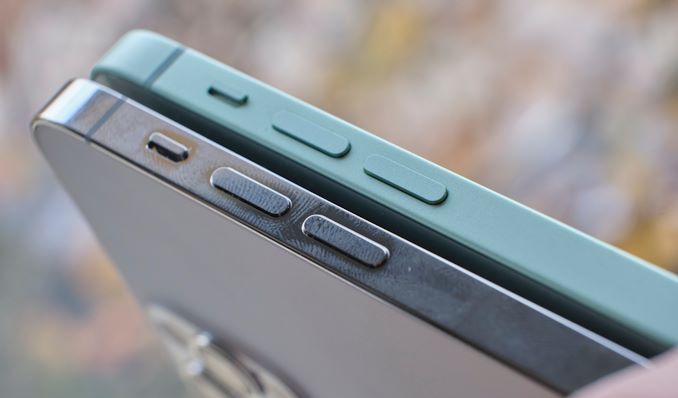
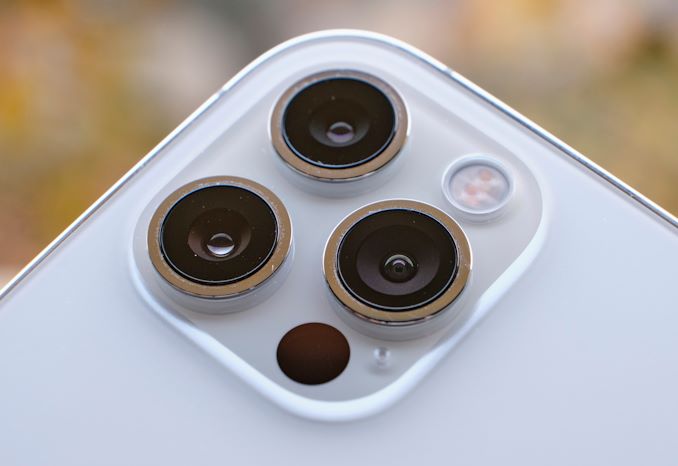








101 Comments
View All Comments
raemike - Monday, November 30, 2020 - link
Apple markets this as the strongest iPhone ever, this is pure BS. The back glass on my iphone12 broke in 3 days. I was putting on boots and the phone fell about 18 inches to a concrete floor. Unbelievable. Apple wants me to pay $100 to fix!!!! The fact is that the iPhone 12, from my experience, is by FAR the most fragile iPhone I've ever owned. Very unhappy that Apple won't even fix their defect. Phone didn't last 3 full days!Holliday75 - Monday, November 30, 2020 - link
You dropped it on concrete ad you blame Apple? LOL.I shot my dog....its the guns fault. I ran a little old lady over. It's the car's fault.
AshlayW - Monday, November 30, 2020 - link
Why did you shoot your dog? Also, you're probably going to prison now.PickUrPoison - Saturday, December 12, 2020 - link
Don’t you care about the little old lady?!?cha0z_ - Tuesday, December 1, 2020 - link
They strictly clarify it's for the FRONT glass, most likely they saved upgrading the back glass for the next year model + glass is glass, no matter how strong it is, the wrong angle/force and you are done.29a - Tuesday, December 1, 2020 - link
What is unbelievable is you didn't have any protection on your phone and now you're bitching about breaking it.techconc - Monday, December 7, 2020 - link
"The back glass on my iphone12 broke in 3 days."If anything, that shows you how strong the ceramic shield is, since only the front of the phone has the ceramic shield.
zanon - Monday, November 30, 2020 - link
Thanks for the review! I upgraded from an iPhone X to the 12 Pro Max this time around, and have been kicking the tires for a week and a half or so now. SO wanted a 12 Pro regular, and a friend got the plain 12. These days I think the additive improvements over 3-5 generations is probably how must people view these things, year-over-year upgrades, or even every 2 years, seems to quite reasonably be less common (which is a good thing). Coming directly from an X, the changes are quite significant. There are obvious sticker items like improved performance and cameras. But there is also more subtle yet extreme important day-to-day use stuff like the Face ID system being a lot more responsive and accepting more angles and distances now then the generation 1 I had before. Some other disagreement, agreement, and comment:Disagreement: I think you really missed the mark on how big a deal the new LIDAR sensor is for pro usage (you barely gave it a sentence) and in turn as a differentiator. In fact even though it's early days and rough, I think that might be one of the most significant Pro differentiators in a long time, "pro" here as-in actual contracting to make money. I've been trying it out with magicplan and RoomScanLiDAR and already used it at a project site. Apps like magicplan previously could be paired with bluetooth laser rangers and used that way (and still can of course), but from my testing so far the new built-in lidar does an extremely close and competent job in measuring over shorter distances and details, and you get a pretty passable v1 3D point cloud too for something you get in your pocket all the time for a few hundred extra. I was able to throw together for plans and basic 3D from scratch for a historic hotel and then use that for mockups and renovation deployment way, way better than I'd ever have expected even a year ago from a handheld with this pricing (dedicated laser 3D scan units have been available for a while, and will produce better results more quickly, but are NOT cheap or pocketable). Even the simple AR Measure app suddenly no longer feels gimicky or last resort but actually is usable without my measuring tape in many cases. The whole calibration thing is gone, it's fast, and accurate in my use to at least 1/2" which for bulk is often good enough.
Again definitely early, early days. There are obvious holes in the apps, basic things like import are non-existent, etc etc. Yet even so it's already saved me some money and time in commercial work. As far as professional usage goes, it feels like a bigger leap forward in terms of the phone itself being a tool (vs an interface to other tools) than many things before.
Agreement: I'm glad you highlighted that the new sharp edges are a definite step back in ergonomics. It was what struck me most immediately of course in terms of out-of-box experience. Maybe it works well for the Mini, but even on the regular (let alone the Max) the hand feel stinks compared to the iPhone X/XS/11. The edges really dig in and add to fatigue.
However, some of that can be mitigated with a case, and that leads me to the comment that I strong suspect Apple is now designing the iPhone at least in part around case use. It's been a while since I last looked it up, but in a previous discussion we did some research and it looked like at least 75% (yes, 3/4) of phone users use cases. They're a big source of personalization, not just in terms of looks but adapting the phone to various personal use cases. Obviously drop/scratch protection to a customizable degree depending on whether someone tends to have accidents or works/hobbies in heavier duty environments, but also more exotic stuff like camera lens/telescope attachment (or just plain extra battery).
That being the case (harhar), there a reasons to design the phone with that in mind. The camera bump for example, they extra z-distance is necessitated by the camera modules. But of course Apple could just make the whole phone thicker so that it was still smooth. And if it was expected the phone would be used bare, that'd make sense. But if it's expected it'll usually be in a case, it makes *more* sense to have it as it is now, because the available mm means the end result is something that provides whatever else the owner wants but being thinner, lighter and flush on the back than if it was a case over an already thickened device.
As someone who has never dropped their expensive handheld stuff in 30 someodd years now and previously never bothered with a case, I do kind of miss good old naked devices. But I can't argue with the numbers either. And for the first time with the 12 I feel like a case is a requirement, not just a nice-to-have, it's too sharp and too slippery without it. Of course this makes the use of steel in the Pro even dumber, extra weight for absolutely nothing. I wonder why Apple didn't use titanium instead, they used to do a lot with that material and it seems like it'd let them claim a different "pro" material without so much weight. Oh well.
Incidentally I think the Max might be the least popular model this time around. I was lazy about ordering, didn't bother for a few days. Yet it shipped almost instantly, while I know people who ordered regular 12s/12 Pros much more quickly than me (same channel/phone company) who are still waiting. Would be interesting if Apple breaks things out, the Mini and regular are really compelling this time (which is as it should be!).
Thanks again for the review.
zanon - Monday, November 30, 2020 - link
Also to add: CreateML (https://developer.apple.com/documentation/createml... is starting to get really impressive, and that Apple has been expending effort to allow it to all stay local rather than dependent on cloud services is useful too. Given the review points out the minimal GPU improvements, it seems like there a implications worth considering given that Apple has chosen to spend a lot of silicon budget on specialized stuff, NN etc instead. At some point I'd like to see more bench marks and articles investigating how that stuff is getting used (even basic simple first party stuff like photo facial recognition), the performance, and what kinds of network dependency and privacy the various iOS/macOS/Android/Windows/Linux implementations have. It's going to be more challenging to to see where silicon budget is yielding gains, but some of that may ultimately matter more than raw CPU/GPU in a lot of day to day and application specific use.name99 - Monday, November 30, 2020 - link
It's always difficult to know just how much of Apple's timing is planned and how much is luck.I think it's definitely planned that the MAC's this year have the same appearance as always, to reassure most buyers that while techies might get excited about the new internals, this is the same familiar mac as always.
BUT I think it's also clear that the CPU/SoC this year had a very different set of priorities from performance, that it was basically more of the same. Changed where that was easy to do given the new process characteristics, but the emphasis on the stuff required for the mac, secondarily on peak power. I raise this because the corollary to the point I made above is that the best time to change the appearance is precisely when the internals are undergoing their least exciting change...
If I had to guess, my guess would be that Apple has established the line (mini, maybe refreshed every two years; mainstream; pro; pro max) and the design language, for the next four years or so. Get used to these sizes and the squared off edges!
On the flip side the most essential Mac-relevant SoC changes are done. Next year may again be "disappointing" in that the leading edge team will have the many core high end machines as its priority, so while the A15 SoC won't exactly be phoned in, it may still be less than we might hope.
On the other hand, as soon as the A16 Apple may be willing to say "OK, Rosetta2 is over for new machines. If a vendor hasn't ported by now, it's not worth our time to keep coddling them". Being able to drop the compatibility stuff [memory ordering, 4kB subpages] will help a bit (less complexity always helps some), and they'll finally be past the huge effort of the transition, so once again performance can get top billing.
Another data point for my theory (this is the appearance for the next four years or so), when do we get an Apple modem? Maybe 2022? Once again that will come in a shell that looks absolutely familiar, like an iPhone has looked for years, so that the fact of getting new technology that the techies are all chattering about won't seem strange and unnerving; what you buy will feel like last year's iPhone.